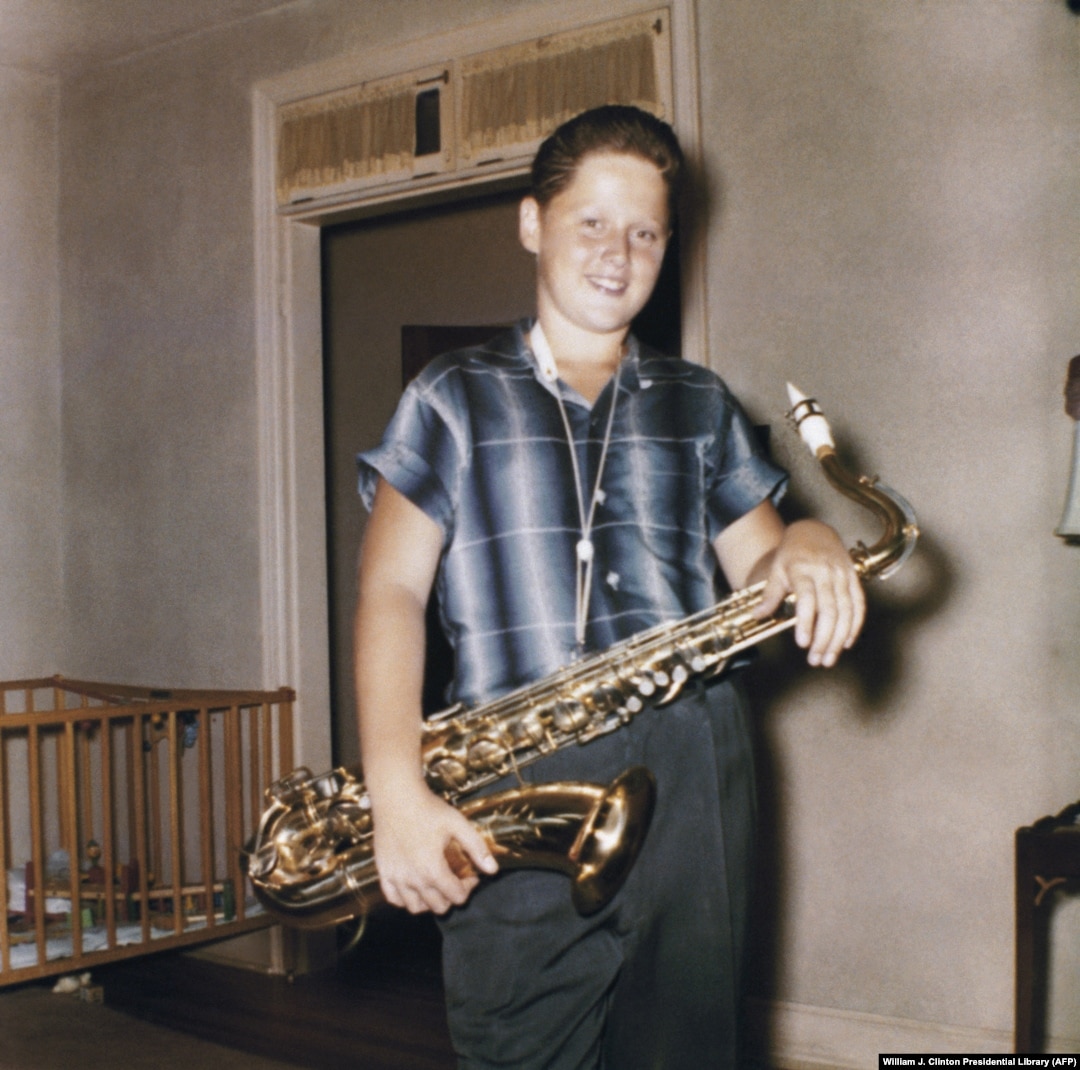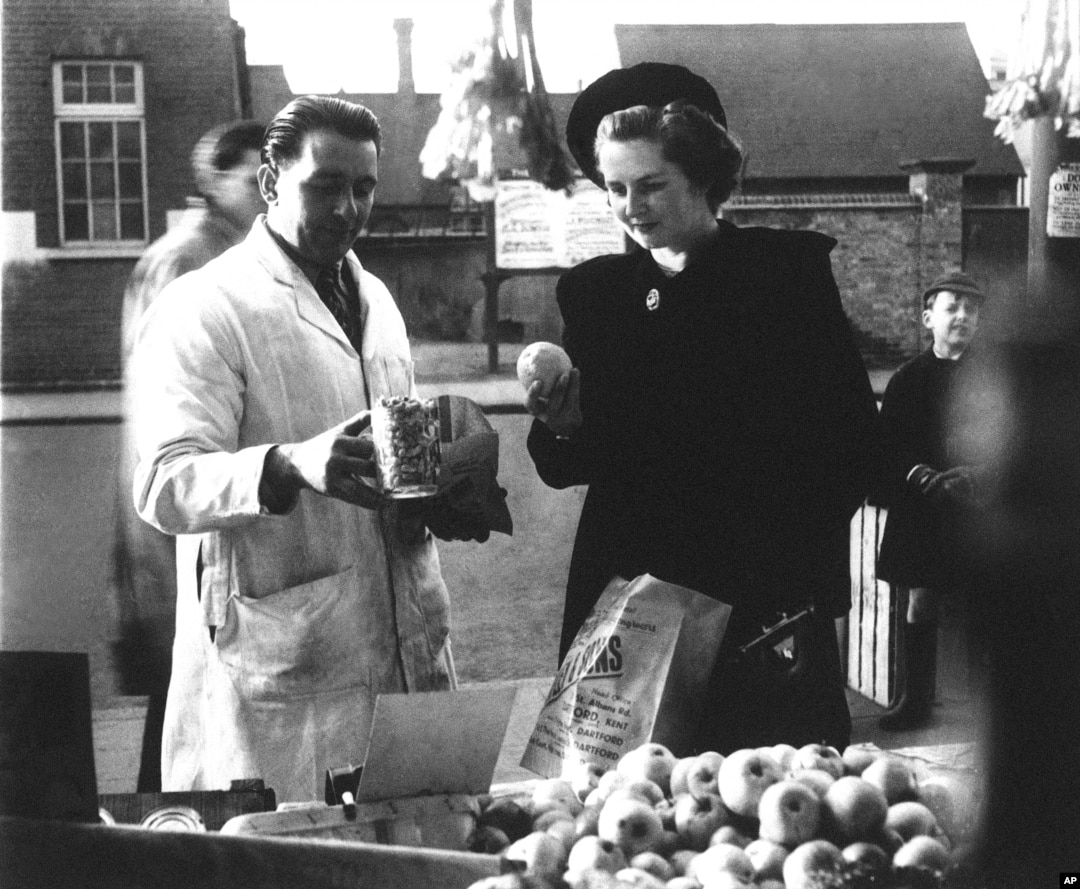World Leaders When They Were Young

Former U.S. President Bill Clinton at home with his saxophone in Arkansas in 1958

Ukrainian President-to-be Volodymyr Zelenskiy in the late '70s or early '80s

Margaret Roberts (later British Prime Minister Margaret Thatcher) buying peanuts and fruit in Kent in 1950
Soviet schoolboy and future President of Kazakhstan Nursultan Nazarbaev (left) in the 1950s
Hassan Rohani, now president of Iran, during his military service. Rohani later studied in Glasgow, Scotland, where he wrote a doctoral thesis on The Flexibility Of Shari'a (Islamic Law) With Reference To The Iranian Experience. A student group later claimed passages had been lifted.
Childhood snaps of Mikheil Saakashvili, former president of Georgia and now on-again, off-again citizen of Ukraine
Future Chancellor Angela Merkel sizzles up some food on a camping trip in 1973, 16 years before German reunification.
Nikita Khrushchev and his first wife, Euphrasinia, dressed in their Sunday best in 1916. Euphrasinia would die of typhus a few years later as Nikita was rising through Communist Party ranks toward eventually heading the Soviet Union.
England's Princess Elizabeth (later Queen Elizabeth II) as a teenage army auxiliary in 1945
Nikol Pashinian, now the prime minister of Armenia, pictured as a toddler in the 1970s.
Current Prime Minister of Canada Justin Trudeau (center) stands at the casket of of his father, Pierre, the former prime minister, in 2000.
Boris Yeltsin (center left) chilling with friends in Stalin's Soviet Union. The future president of Russia was popular and academically gifted as a child, but his love for practical jokes led to him blowing two fingers off his left hand, reportedly with a grenade.
Viktor Orban (left) consults with a colleague in the Hungarian parliament in 1990. The young Orban -- now the country's prime minister -- was known as a fierce critic of Hungary's communist authorities and was photographed being arrested in the late 1980s.
Benjamin Netanyahu in 1964, three years before the Six-Day War and 45 years before becoming Israeli prime minister
Former U.S. President Richard Nixon as a reserve for a California college football team in the 1930s
Police mug shots from the early 1900s of the man who would later be known as Josef Stalin. Around the time these photos were taken, the future Soviet dictator's gang of communist revolutionaries shocked the world by killing some 40 people in a bank robbery in the center of Tbilisi.
U.S. President Donald J. Trump (far left) in an undated family snapshot
Islam Karimov (right) making a model airplane. In the 1940s the young Karimov, who would later lead the Uzbek Communists and then become Uzbekistan's first president, was sent to, then removed from, then finally sent back to an orphanage.
Benito Mussolini -- the future Italian dictator -- in custody in 1903 in Switzerland, where he'd emigrated partly to avoid Italian military service but failed to find a permanent job. He was arrested by Swiss authorities after supporting a violent worker's strike.
John F. Kennedy returns to New York after a summer holiday in Europe in 1938, three years before beginning the wartime naval service that would propel him into Congress and ultimately the U.S. presidency.
Japan's Prime Minister Shinzo Abe (right) during his time studying public policy at the University of Southern California
A preteen Barack Obama -- the future U.S. president -- with his Kenyan father in Hawaii in 1972
Nicolae Ceausescu, the future Stalinist-style dictator of Romania, welcomes the Red Army to Bucharest in 1944.
Ali Khamenei (center right), now the supreme leader of Iran, protests in Mashhad during Iran's 1979 Islamic Revolution.
A heavily retouched photo of Leonid Brezhnev (right), who headed the Soviet Union from 1964-82, playing chess with a friend in the Ukrainian S.S.R. in 1935
Nicholas Alexandrovich, later Nicholas II, the last tsar of Russia, on a trip to Japan in 1891. Soon after this picture was taken, the tsarevich was attacked by a sword-wielding policeman who slashed at his face before being tackled by two rickshaw drivers. No motive was ever established, and some historians believe the attack influenced Nicholas's later decision to launch a war against Japan in 1904.

